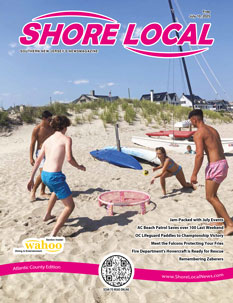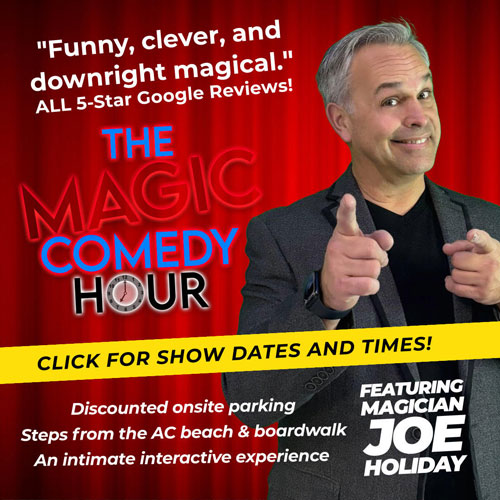By Bruce Klauber
“I only wish I could go out and hear somebody who’s doing me.”
— Frank Sinatra, circa 1963
There are a number of singers out there these days who are “doing” Frank Sinatra (I am one of them). They range in quality from very good to okay.
In seasons past there were only a few Sinatra-styled vocalists out there. There was Duke Hazlett, active in the late 1950s and early 1960s, and probably the best of them all. Later on, the late and great South Philadelphian Billy Ruth beautifully captured the earlier, 1940s Sinatra style.
Then there was Sonny Averona.
The story of Sonny Averona, who passed away on July 4, 1992, is the stuff of movies and books. There has been talk of a film about his life, and there already is a singular book out there, “Sonny: A South Philly Story.” The book is gritty and it’s selling.
Stories like Sonny’s happen once in a lifetime. Though he took singing lessons as a youngster, he made a good living first as an auto mechanic and, beginning in 1967, as the owner of several auto junkyards.
Along the way he opened a nightclub in what was an abandoned church in South Philadelphia which he called The Roman Gardens. It did well until there was a shooting at the club and the Gardens closed.
He continued in the junkyard business and eventually became president of the South Philadelphia Auto Wreckers Association. Whatever he was doing, he was always listening to the music of Frank Sinatra and would often get up and sing at gatherings of family and friends.
Here’s where the miracle of a story begins: It happened sometime in 1982 at a junkyard association dinner held at the old Palumbo’s nightclub in South Philadelphia. Singer/comic Julie DeJohn, who knew Sonny and knew that Sonny sang, was entertaining that night. Sonny told the story to David Richards of The New York Times in a 1992 article that ran not long after Sonny’s passing.
“I was sitting ringside that night and Julie DeJohn was the comic,” he told Richards. “She spotted me and said, ‘What are you doing down there? Get up here and sing a few songs.’ So I sang ‘All of Me’ and a couple of others.
“My friends were cheering and everything. I walked off the stage, never thinking that a couple of executives from the Playboy Hotel/Casino in Atlantic City were there. Afterward, they called me over to their table and said, ‘How’d you like to sing at the Playboy?’ I had a voice, but I had no stage presence. No arrangements. But I knew what they saw in their minds. They saw all these people that I sort of controlled. And they knew that junkyard people make a lot of money. They figured they’d bring me down there and I’d bring a lot of gamblers with me.
“They gave me a Monday night, a dark night, in the main room of the Playboy casino. I opened up on June 28. And sure enough, they were waiting in line to see me. Everyone there claimed to be my aunt or my uncle. I sang four or five bars of ‘Come Fly with Me’ behind the curtain. Then they opened the curtain and the crowd went wild. It was my first time on a stage. I had a 16-piece orchestra behind me and I’m shaking like crazy.”
According to Richards, on that night, the casino registered one of its biggest “drops” (money lost at the gaming tables) for a Monday, and Sonny was asked to do six more Mondays. The “junkyard singer” was invited to stay on for the next six Monday nights. Sonny’s wife, Roseann, told Richards that “Sonny saw a new life opening up and there was nothing you could say to change his mind.” Three years later, he turned the junkyard business over to his three sons. “From then on,” said Richards, “he was, first and last, a singer.”
The Playboy dates parlayed into steady casino work at Harrah’s, Resorts, the Golden Nugget, Caesars, The Claridge and Trump Taj Mahal. I played drums for Sonny on and off during those years, and I grew to love the guy personally and professionally.
Though he wasn’t fixated on Sinatra or the Sinatra style – he always insisted that what audiences heard was “his own voice” – he had somehow internalized the style, the artistry, the phrasing, the personality, the electricity and the charisma, to the point where it became his own. And there was a physical resemblance to boot. I never saw anything like it.
Like Frank Sinatra, when Sonny Averona walked into a room he owned it. You were drawn to him, and you knew he was there because the room was filled with electricity. I often hung out with him in the wee small hours after the job at places like Grabels, and I saw people clear a path so he could walk through the room comfortably. High-rollers’ suites opened their doors to him. Headliners in the main room came into the lounge after their shows to be with him. He knew people who were connected. Years later, I came to believe that one of the reasons so many flocked to Sonny was because, in some weird way, being with him was the closest they would ever get to being with Frank Sinatra.
Although unschooled formally, he could be a marvel musically. He knew what he wanted from the big bands that backed him from time to time in the big rooms, and from the trios that accompanied him in the lounges. His voice was a powerful, barrel-chested instrument with a better-than-average range. He had a fine sense of swing and could demonstrate what I perceived as real vulnerability on the ballads.
Truth be told, there was a vocal similarity to Sinatra, specifically the latter-day Sinatra, but the power was pure Sonny Averona. In the years I was with him, I never knew him to miss a note, to sing out of tune, to forget a lyric, or to foul up the tempo.
He could have musically become his own man, and in the final months of his life, those of us who accompanied him believed he was on his way to becoming an individual stylist. But he just couldn’t get away from the Sinatra thing.
“It’s tough for a guy like me,” he said in The Times story. “I try to do my own thing. I do show tunes. I do Tony Bennett, Vic Damone, Al Martino. I sing as good as all of them. But the people won’t let me. The minute I get on the stage, they shout out, ‘My Way’ or ‘The Lady Is a Tramp’ or ‘New York, New York.’ And so I end up staying in that Sinatra vein.”
Though there were some good opportunities along the way – an act with heavyweight champ Joe Frazier, a unique gig on a cruise ship that sailed between Stockholm and Leningrad (now St. Petersburg), and even two appearances on the “Remington Steele” television show, but nothing parlayed into the permanent big time.
By 1992 I could see things winding down. It wasn’t because of Sonny or his talent. Atlantic City was changing. The lounge he filled in the midnight-to-5 a.m. slot at the Taj Mahal was leveled to make room for slot machines. The last, regular spot he had was a weekends-only thing outside of the dining rooms upstairs at Caesars on the Boardwalk. After that, he headed for a summer residency at Cozy Morley’s less-than-glamorous Club Avalon in Wildwood. I don’t know where he would have gone from there, although there was always talk of “something big” on the horizon.
On the night of Friday, July 3, 1992, I was sitting at the drums at Caesars when a well-dressed gentleman came up to me and identified himself as Dick Richards, a feature writer for The New York Times. He told me he was there to write a feature on Sonny Averona. I called out to Sonny. “Hey Sonny,” I said. “This guy from The New York Times is here to write a feature article on you!” Sonny yelled back to me, “Yeah…are you gonna write it?” I walked over to Sonny and quietly told him, “Sonny, this is the real thing.”
I thought theTimes piece could finally be a career turning point for Sonny to catapult him into the big time. So did he. But on the morning of July 4, I got a call from our pianist, Tom Magill, breathlessly telling me that Sonny had died suddenly earlier that morning. My instincts took over and I told Tom, “We’re playing tonight at Caesars. I don’t care if we don’t get paid. We’re going to play for Sonny.”
Sonny Averona was 55 years old. I was an honorary pallbearer, with Joe Frazier and Cozy Morley at the Cherry Hill cemetery where they buried Sonny. Shore Local’s Chuck Darrow wrote Sonny’s obituary for the Courier-Post.
On Aug. 30, 1992, David Richard’s two-page feature article on Sonny Averona headlined, “The Life and Death of a Lounge Singer,” was published in The New York Times. It was quite a tribute. But by then, it didn’t matter.
Sonny’s son, Michael, whose professional name is “Sonny Averona, Jr.,” has been singing for some time. He’s a handsome guy with a powerful voice and the Averona charisma, much like his father. In fact, his voice is more like Sinatra’s than his father’s was, but that sheer power is unmistakable. I wish I could hear more of him. I’ll bet that’s what Sonny would have wanted.
Michael acknowledges all the guys out there today trying to do Sinatra, but he knows who was the best of all. As Michael just told me, “Nobody’s like Sonny. People come along and try to do it and do a pretty good job at it, but no one is like Sonny.”
Bruce Klauber is the author of four books, an award-winning music journalist, concert and record producer and publicist, producer of the Warner Brothers and Hudson Music “Jazz Legends” film series, and performs both as a drummer and vocalist.














